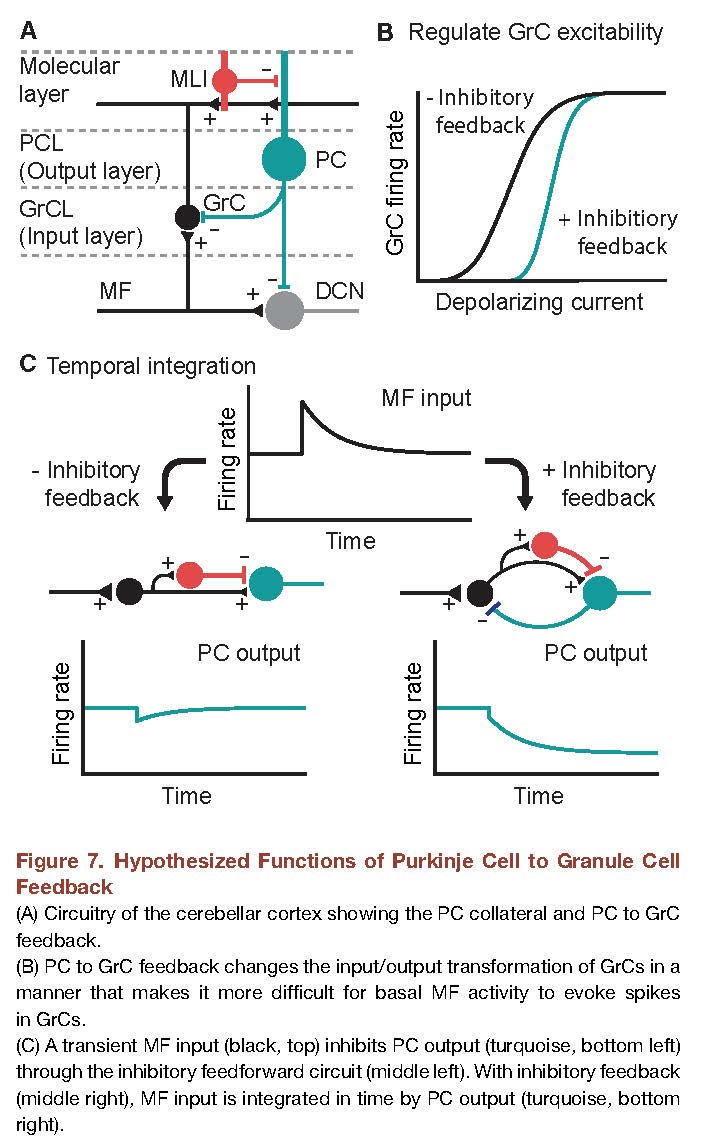GuoC+5-2016¶
Notes about [GuoC+5-2016] 1.
- 1
Chong Guo, Laurens Witter, Stephanie Rudolph, Hunter L. Elliott, Katelin A. Ennis, and Wade G. Regehr. Purkinje Cells Directly Inhibit Granule Cells in Specialized Regions of the Cerebellar Cortex. Neuron, 91(6):1330–1341, September 2016. URL: https://linkinghub.elsevier.com/retrieve/pii/S0896627316305037, doi:10.1016/j.neuron.2016.08.011, Notes: GuoC+5-2016.html (this file).
This paper shows that Purkinje Cell Collaterals inhibit granule cells in some regions.
From abstract:
Inhibition of granule cells plays a key role in gating the flow of signals into the cerebellum, and it is thought that Golgi cells are the only interneurons that inhibit granule cells. Here we show that Purkinje cells, the sole output neurons of the cerebellar cortex, also directly inhibit granule cells via their axon collaterals. Anatomical and optogenetic studies indicate that this non-canonical feedback is region specific: it is most prominent in lobules that regulate eye movement and process vestibular information. Collaterals provide fast, slow, and tonic inhibition to granule cells, and thus allow Purkinje cells to regulate granule cell excitability on multiple timescales. We propose that this feedback mechanism could regulate excitability of the input layer, contribute to sparse coding, and mediate temporal integration.

Figure 2 in GuoC+5-2016 [GuoC+5-2016].¶
Comment: I don’t understand why the purkinje cell firing rates are decreasing in figure 5c. I thought excitatory input from mossy fibers would increase the firing of purkinje cells.